
In 1918 and 1919 thirty-seven young women, friends and neighbors of my grandmother Fannie Mae Turner were members of the Edelweiss Club in Montgomery, Alabama. These are snapshots from their lives, place and times.
During this time period up until the 1960s, theaters were segregated in the South and even in some places in the North. The main floor would be for white people and the balcony would be for black people.

I never spoke with my grandparents about attending movies but My Uncle Henry shared this memory to me in the 1990’s. There was a segregated theater on Grand River, a big business street several blocks from my grandparent’s house on Scotten. Black people were supposed to sit in the balcony. This was in Detroit, Michigan. Once Henry was going to the movies with his cousin, Minnie “Girl” Mullins (she was named after her mother Minnie, hence the “girl”). After they purchased their tickets, the man was standing there directing them towards the balcony. Minnie put her nose in the air, said she wasn’t sitting up there and went and sat downstairs. Nothing happened, they weren’t thrown out or arrested or anything. He admired Minnie for her boldness. Henry’s younger sister, Gladys, didn’t remember the movies being segregated by the time she was going. This would have been in the 1920s.
In Montgomery, The Pekin Theatre was opened in 1913. The advertisement below appeared in the local white newspaper. It was located in the business section of the Centennial neighborhood.
Most of the movies shown were the same as those shown downtown in the white theaters. But sometimes they would show a “race” movie, one made with a black cast playing all the parts, not just maids and servants. The Homesteader by Oscar Micheaux was one such movie. It was shown in 1919 at the Pekin. I bet some of the women in Edelweiss went to see it.

This is a very interesting but long – 39minutes – video about Oscar Micheaux and The Homesteader. You have to click through to Youtube to watch.
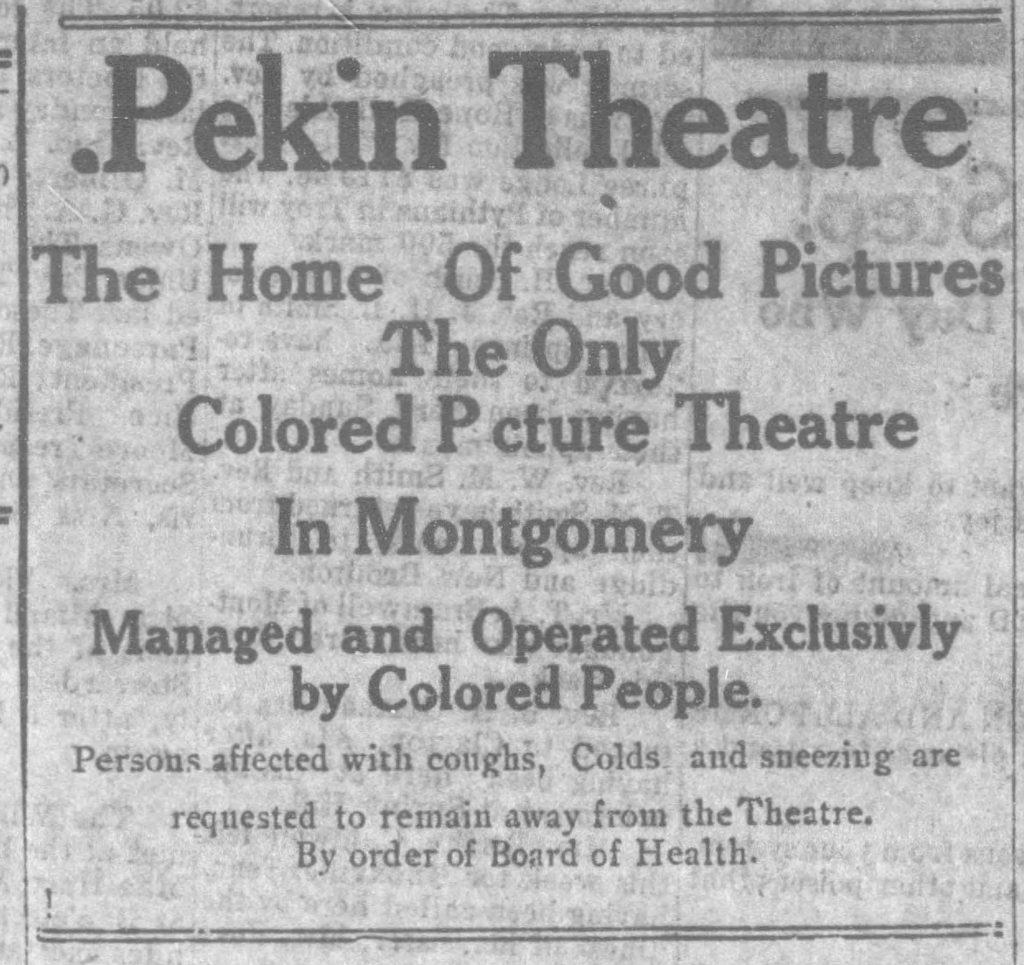
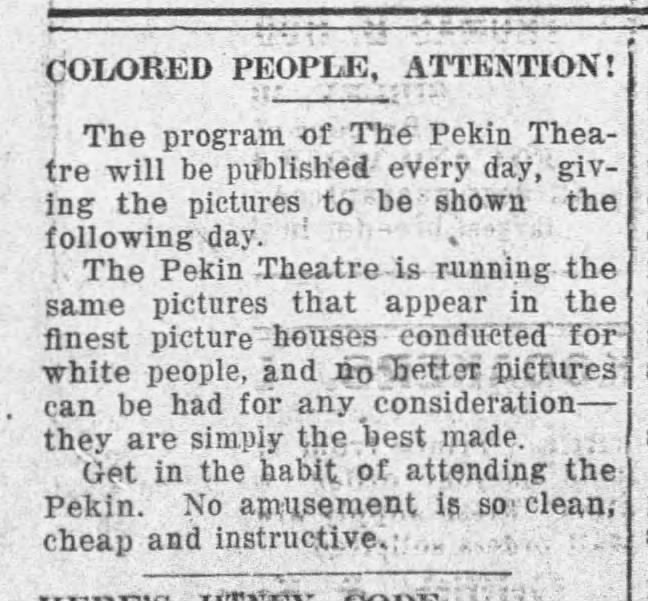
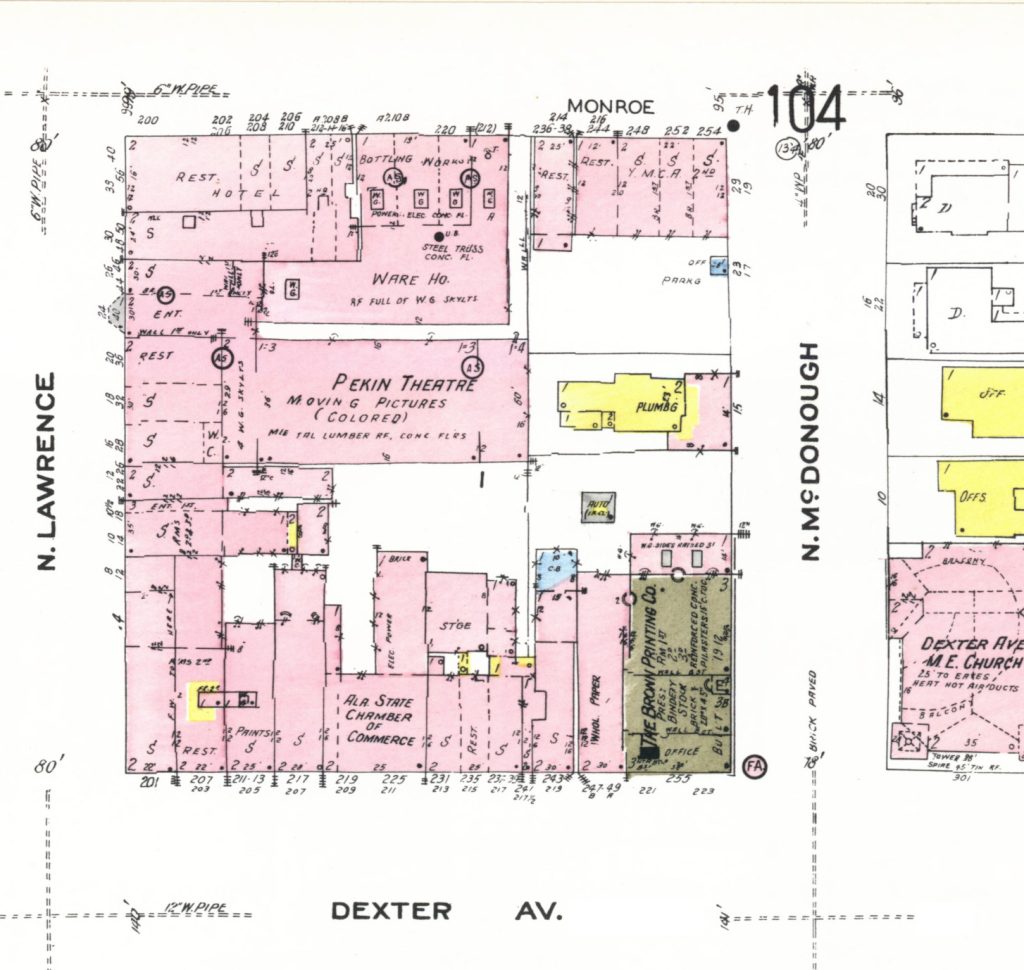
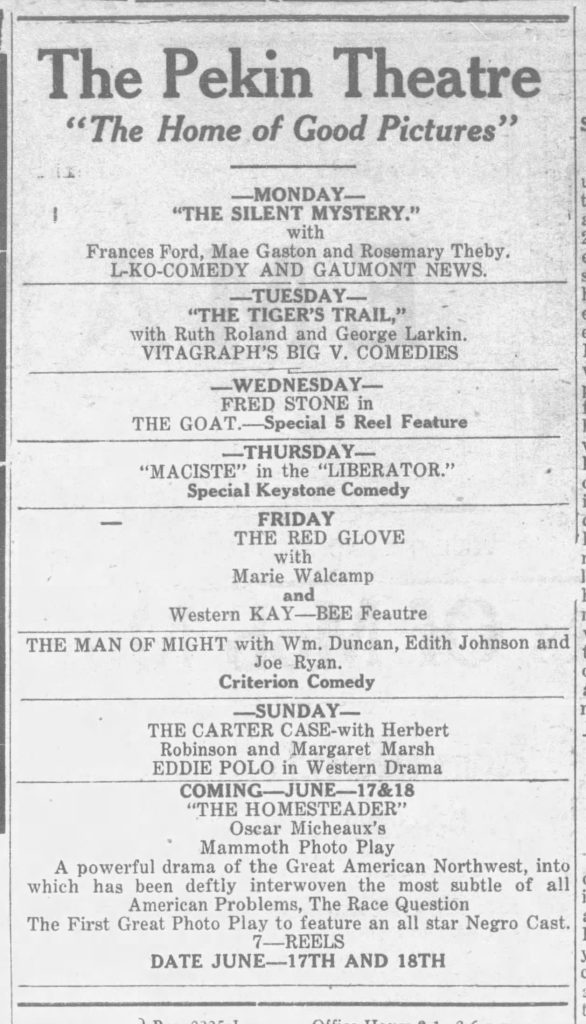
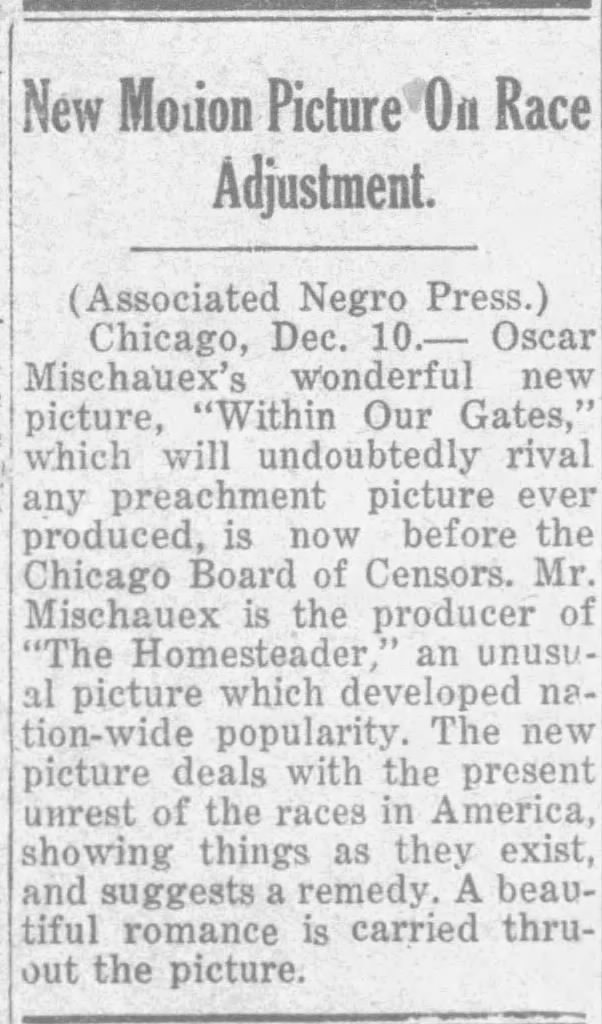
This World needs more Minnie’s !
My family was full of them. Henry also had a story about different cousins drinking out of the white drinking fountain in Athens, Tennessee.
I wasn’t allowed to go up in the balcony, at Saturday matinees, but mainly because bad kids were up there who would throw popcorn down on the rest of the people…St Louis in the 50s. So glad to hear your family had many Minie’s!
I didn’t go much to the movies. I’ll have to ask my husband his experiences in 1950s St. Louis.
Hurrah for Minnie — and for the Pekin Theatre for bringing equity to movie-going.
I wonder if it was black owned.
This is amazing
It was one of the most interesting to work on.
I watched ‘Through Our Gates” by Micheaux as part of my research for my 1920s story set in Chicago. I found it surprisingly candid and kind of explicit. It really touched me, especially at the end.
1920s movies can be very… how can I say? Strong? We tend to think they were edulcorated, but not all of them were.
You are right. I had to go look up edulcorated. I never heard it before. People tend to flatten life in the past.